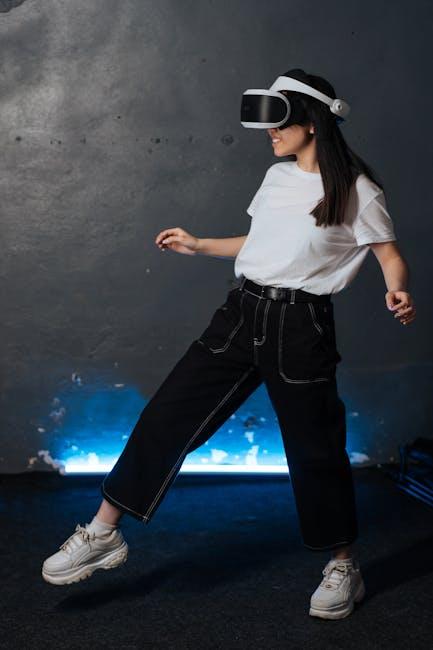How Augmented Reality Enhances Live Video Experiences
In today’s fast-paced digital world, the demand for captivating, immersive content is soaring. Augmented Reality (AR) is rapidly transforming live video experiences across diverse industries – from entertainment and sports to education and marketing. This article will explore how augmented reality elevates live video by making it more interactive, engaging, and memorable for viewers. Whether you’re a content creator, marketer, or a tech enthusiast, understanding AR’s impact on live video is essential to leverage this groundbreaking technology.
What Is Augmented Reality in Live Video?
Augmented Reality (AR) overlays digital elements – such as 3D graphics, animations, and information – onto live video footage in real time. Unlike Virtual Reality (VR), which immerses users in fully digital environments, AR blends virtual content with the real world, enhancing the live video experience without disconnecting the viewer from their physical surroundings.
Key Components of AR in Live Video
- Real-time tracking: Identifies and follows objects or environments to synchronously display digital overlays.
- Computer vision: Interprets live video data for accurate placement of virtual elements.
- Rendering engine: Integrates 3D models, animations, or graphics seamlessly into the video feed.
Benefits of Using Augmented Reality in Live Video
Implementing AR in live broadcasts goes beyond flashy visuals – it delivers measurable advantages that boost viewer engagement, brand value, and communication effectiveness:
- Increased Engagement: Interactive AR features such as polls, gamified elements, and dynamic overlays captivate audiences, encouraging longer watch times.
- Enhanced Storytelling: AR allows creators to visually illustrate complex ideas, statistics, and emotions, revealing layers behind the story.
- Personalized Experiences: Viewers can customize AR filters or perspectives, creating a tailored live video journey.
- Real-Time Data Visualization: Sport broadcasts, news, and webinars benefit from AR-infused graphs, scoreboards, and annotations.
- Brand Awareness and Differentiation: For marketers, AR-enabled live events offer innovative ways to showcase products and connect with consumers.
Popular Use Cases and Case Studies
1. Sports Broadcasting
Live sports events have embraced AR to revolutionize fan experiences. For example, augmented graphics highlight player stats, trajectory paths, and game strategies, making broadcasts more insightful and immersive.
2. Concerts and Music Festivals
Artists and event organizers employ AR to overlay stunning visual effects on live streams, allowing fans worldwide to experience concerts with interactive elements, such as virtual merchandise booths and 3D stage animations.
3. Education and Training
Live educational sessions with AR help explain intricate concepts by superimposing 3D models and annotations directly on the presenter’s video, boosting comprehension and retention.
4. E-commerce and Live Shopping
Companies integrate AR into live videos to allow customers to virtually try on clothes, accessories, or preview furniture in their environment, dramatically enhancing the buying process.
| Industry | AR Feature | Benefit |
|---|---|---|
| Sports | Live player stats & trajectory visualization | Improved fan engagement and understanding |
| Entertainment | 3D stage effects and virtual merchandise | Enhanced event excitement and sales |
| Education | 3D models and explanatory overlays | Better concept visualization and learning |
| Retail | Virtual try-ons during product demos | Higher conversion rates |
Practical Tips for Incorporating AR into Live Video
- Define clear objectives: Identify what you want to achieve – engagement, education, conversion – before selecting AR features.
- Choose reliable platforms and hardware: Invest in proven AR software and compatible devices to ensure smooth delivery during live streams.
- Keep user experience front and center: Avoid overwhelming viewers by balancing digital overlay density with clarity and relevance.
- Test extensively: Live video with AR demands real-time precision. Conduct multiple test runs under different conditions to minimize technical glitches.
- Gather viewer feedback: Use interactive AR elements like polls or Q&As to obtain audience insights and improve future broadcasts.
First-Hand Experience: How AR Transformed a Live Event
At a recent international technology conference, the organizers integrated AR overlays during keynote presentations. Attendees and online viewers could see live annotations, 3D product demos floating beside the speakers, and real-time translation subtitles enhanced with interactive icons. Feedback was overwhelmingly positive:
- 73% said AR boosted their understanding of complex topics.
- 68% engaged more actively with Q&A sessions using AR-enabled interface features.
- Event sponsors reported a 40% increase in brand recall linked to AR ad placements in the live stream.
This case illustrates that AR does not just add “cool visuals” but meaningfully amplifies communication effectiveness and audience participation.
Future Trends: What’s Next for AR in Live Video?
As AR technology matures, several innovations are set to disrupt live video experiences further:
- AI-powered AR: Artificial intelligence will enable smarter scene recognition and context-aware AR enhancements tailored to individual viewers.
- Wearable AR devices: Headsets and AR glasses will provide even more immersive and hands-free live video interactions.
- Mixed Reality (MR) integration: Combining VR and AR, MR will create hybrid experiences that blend full virtual immersion with real-world live content.
- Social AR livestreams: Enhanced interactivity allowing multiple users to contribute AR effects simultaneously during live broadcasts.
Conclusion
Augmented Reality is revolutionizing the way live video content is experienced, making it more dynamic, interactive, and personalized. By overlaying helpful digital elements in real time, AR enriches storytelling, boosts engagement, and opens new avenues for brands and educators alike. As technology continues to advance, AR’s role in live video will only grow, offering unparalleled opportunities to connect with audiences in authentic and innovative ways. If you’re aiming to elevate your live video productions, embracing AR isn’t just an option – it’s the future.











